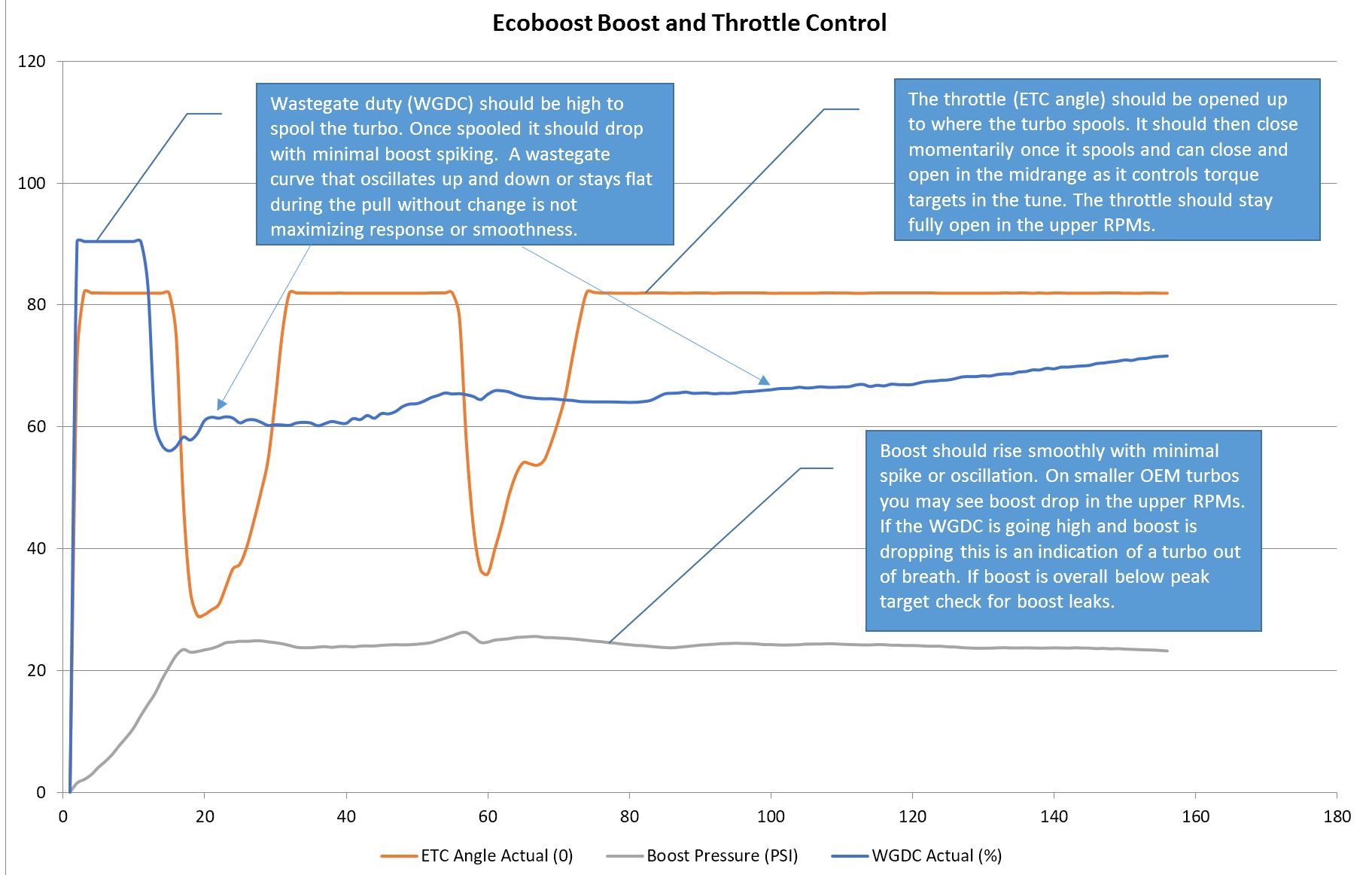In the software on the ECU, there are multiple targets and limits for managing power output. The most commonly employed targets and limits will be based on torque, load, and boost.
Load and torque are closely related and they are modelled inside the ECU. Ford calls this modelling technique HDFX and it takes into account the variable cam timing of the engine. The model turns a pressure signal from the MAP and TIP pressure sensors into and air mass measurement since the car does not have a MAF sensor. This is important as for example, you will see higher calculated torque and load during cooler weather for the same boost level simply because the air has a higher density and the turbocharger flows more air mass at the same pressure.
Boost is simply that – pressure inside the manifold.
The airflow modelling has to be accurate and the model has to be tuned depending on what modifications are installed (different turbo, cams, etc). The result of this model is used everywhere – from torque targeting to spark timing to fueling.
Now, when you press the throttle, there is a torque request that then gets turned into a load request that then turns into an airflow request that then turns into a pressure (boost request) that then gets passed onto the turbocharger model and wastegate is calculated and adjusted. Whew … as you can see everything cascades down so errors along the way will also get propagated.

All this modelling must then translate into a control of the torque. There are several mechanisms to control the torque output and wastegate, the electronic throttle, and spark timing are used together. Controlling boost only using the wastegate is much slower to react than also involving the throttle, and the throttle is much slower than spark timing. Having the correct targets and limits in place for each will allow the ECU and motor to be responsive and smooth. It will also catch issues such as a line popping off the wastegate for example by closing the throttle. This will happen both at part throttle and wide open throttle.

The responsibility of the tune is to ensure that both the internal models, targets and limits are set appropriately and accurate. This results in smooth engine response to throttle input. This also avoids dangerous operating conditions such as boost that is too high due to a mechanical failure or otherwise. (Check out this article for more insight)

All the tunes we build have these principles baked in – from flash to custom – because having them all come together delivers both performance and driveability (this is believe it or not the harder one to get right) for the entire power band and driver inputs.
Happy Tuning, The Stratified Team


